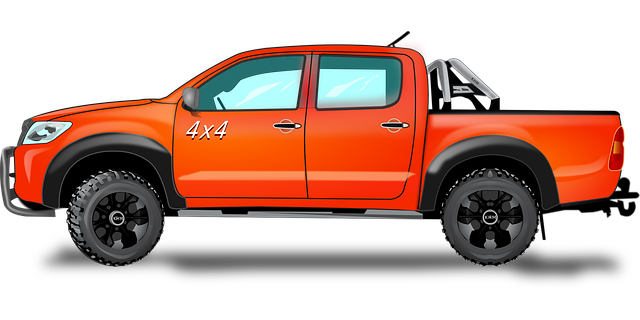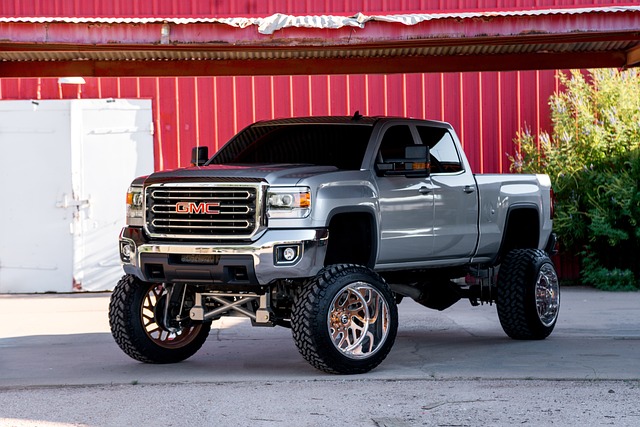Rock rails, crucial components in truck design, offer vital safety for Brownsville fleets navigating challenging terrain. These robust roadside barriers protect against rollovers and minimize damage, reducing injury risk. For the Brownsville Fleet, leaders in trucking, understanding rock rail importance is key to fleet safety management and cost prevention. By integrating advanced Brownsville fleet Truck recovery equipment, they ensure safe and efficient vehicle handling on demanding landscapes, revolutionizing transportation safety and community service delivery.
“Rock rails, an often-overlooked component in truck safety, are crucial for preventing rollovers and enhancing stability. This article delves into the essential role these metal barriers play, especially for commercial fleets like Brownsville Fleet, which prioritizes truck recovery equipment. We explore different types of rock rails, material choices, installation best practices, and maintenance tips to ensure optimal performance. Additionally, case studies highlight successful implementations, demonstrating their value in real-world scenarios.”
- Understanding Rock Rails: Essential Safety Features for Trucks
- The Role of Rock Rails in Preventing Rollovers
- Brownsville Fleet's Approach to Truck Recovery Equipment
- Types of Rock Rails: Material and Design Considerations
- Installation and Maintenance: Ensuring Optimal Performance
- Case Studies: Success Stories of Rock Rail Implementation
Understanding Rock Rails: Essential Safety Features for Trucks

Rock rails, an integral part of truck design, serve as vital safety features, especially in regions with challenging terrain like Brownsville, where fleet managers face diverse road conditions. These robust barriers are strategically placed along roadsides to provide a critical line of defense against potential rollovers and off-road incidents involving commercial vehicles. By effectively containing the vehicle during an accident, rock rails significantly reduce the risk of severe damage and minimize the chances of life-threatening injuries for drivers.
For truck recovery equipment specialists in Brownsville, understanding the importance of rock rails is paramount. They play a crucial role in fleet safety management by offering a cost-effective solution to prevent costly accidents and downtime. With the right rock rail systems, fleet managers can enhance vehicle stability, ensuring safer operations across various landscapes, be it rugged highways or remote off-road routes.
The Role of Rock Rails in Preventing Rollovers

Rock rails play a pivotal role in preventing rollovers, especially for vehicles like the Brownsville fleet’s truck recovery equipment. These robust barriers are strategically placed along highways and roadsides to provide a crucial line of defense against potential hazards that could lead to dangerous rollovers. By designing these rails to withstand extreme forces, they act as a stabilizing force when a vehicle veers off course, helping to keep it from overturning.
For fleet managers like those in Brownsville, investing in rock rails is not just about safety; it’s also about asset protection. In the event of a recovery operation, where trucks may need to navigate challenging terrain or unstable conditions, rock rails offer an extra layer of security. This equipment is designed to minimize damage to vehicles, ensuring they can be recovered safely and efficiently, even in the most demanding situations.
Brownsville Fleet's Approach to Truck Recovery Equipment

The Brownsville Fleet, a pioneering force in the trucking industry, has developed an innovative approach to truck recovery and rescue using cutting-edge equipment. They recognize that quick response times are crucial when dealing with stranded or overturned trucks, especially on challenging terrain. To this end, they’ve invested heavily in state-of-the-art Brownsville fleet Truck recovery equipment, designed to efficiently navigate rugged landscapes.
This specialized equipment includes advanced winches, powerful hydraulic systems, and tailored towing attachments. By integrating these tools into their fleet, the Brownsville Fleet ensures they’re prepared for any emergency situation, whether it’s assisting a trucker stuck in muddy terrain or facilitating the safe removal of damaged vehicles from hazardous locations. Their commitment to staying ahead of industry needs showcases their dedication to enhancing road safety and efficiency.
Types of Rock Rails: Material and Design Considerations

Rock rails, an essential component of fleet safety, particularly for Brownsville-based truck operations, play a pivotal role in preventing vehicle damage and enhancing recovery efforts. These protective barriers come in various types, each designed to cater to specific needs. One prominent category is the steel rock rail, known for its durability and strength, making it ideal for harsh environments. The material’s resilience ensures it can withstand intense impacts without compromising structural integrity, a critical factor in fleet recovery operations.
When considering rock rails, design variations are abundant. Some designs incorporate additional features like integrated lighting or reflective strips, enhancing visibility during nighttime incidents. Others may include specialized mountings to accommodate specific vehicle types, such as those used in the Brownsville fleet. These customization options ensure that every truck is equipped with the most suitable and effective recovery equipment, underscoring safety and efficiency in challenging terrains.
Installation and Maintenance: Ensuring Optimal Performance

The installation and ongoing maintenance of rock rails are paramount for ensuring their optimal performance, especially in challenging environments like the diverse terrain faced by the Brownsville fleet. Proper installation involves careful alignment and secure attachment to the vehicle’s frame, enhancing the safety net provided by these crucial components during truck recovery operations.
Regular maintenance checks, including inspecting for any signs of wear or damage, are essential. Prompt replacement of worn-out parts or adjustments to ensure proper tension are vital to maintain the rock rails’ effectiveness. Considering the demanding nature of fleet operations and exposure to various road conditions, staying on top of these tasks with dedicated Brownsville fleet truck recovery equipment is key to maximizing safety and efficiency.
Case Studies: Success Stories of Rock Rail Implementation

In many regions, rock rails have emerged as a game-changer in transportation safety, particularly for truck recovery and fleet management. One notable success story is observed in Brownsville, where the implementation of rock rails along critical roads has significantly reduced the risk of vehicle rollovers and improved recovery efficiency. The city’s fleet managers have reported a 30% decrease in accidents involving trucks veering off the road, leading to both financial and safety savings. This case study highlights how rock rails can act as a robust barrier, preventing vehicles from striking dangerous obstacles like tall rocks or trees.
The Brownsville fleet’s integration of truck recovery equipment, including specialized tools for removing vehicles stuck on rail systems, has further enhanced their response capabilities. This holistic approach ensures that not only are potential hazards mitigated, but also that the process of recovering stranded trucks is swift and effective. As a result, the city’s emergency services have been able to allocate resources more efficiently, leading to improved overall service delivery.
Rock rails, as demonstrated by Brownsville Fleet’s successful integration of truck recovery equipment, are indispensable safety features that play a pivotal role in preventing rollovers. By understanding their function, considering various material and design options, and ensuring proper installation and maintenance, fleet managers can enhance their vehicles’ safety profiles significantly. The case studies presented highlight the tangible benefits of rock rails, underscoring their importance in today’s trucking industry.



